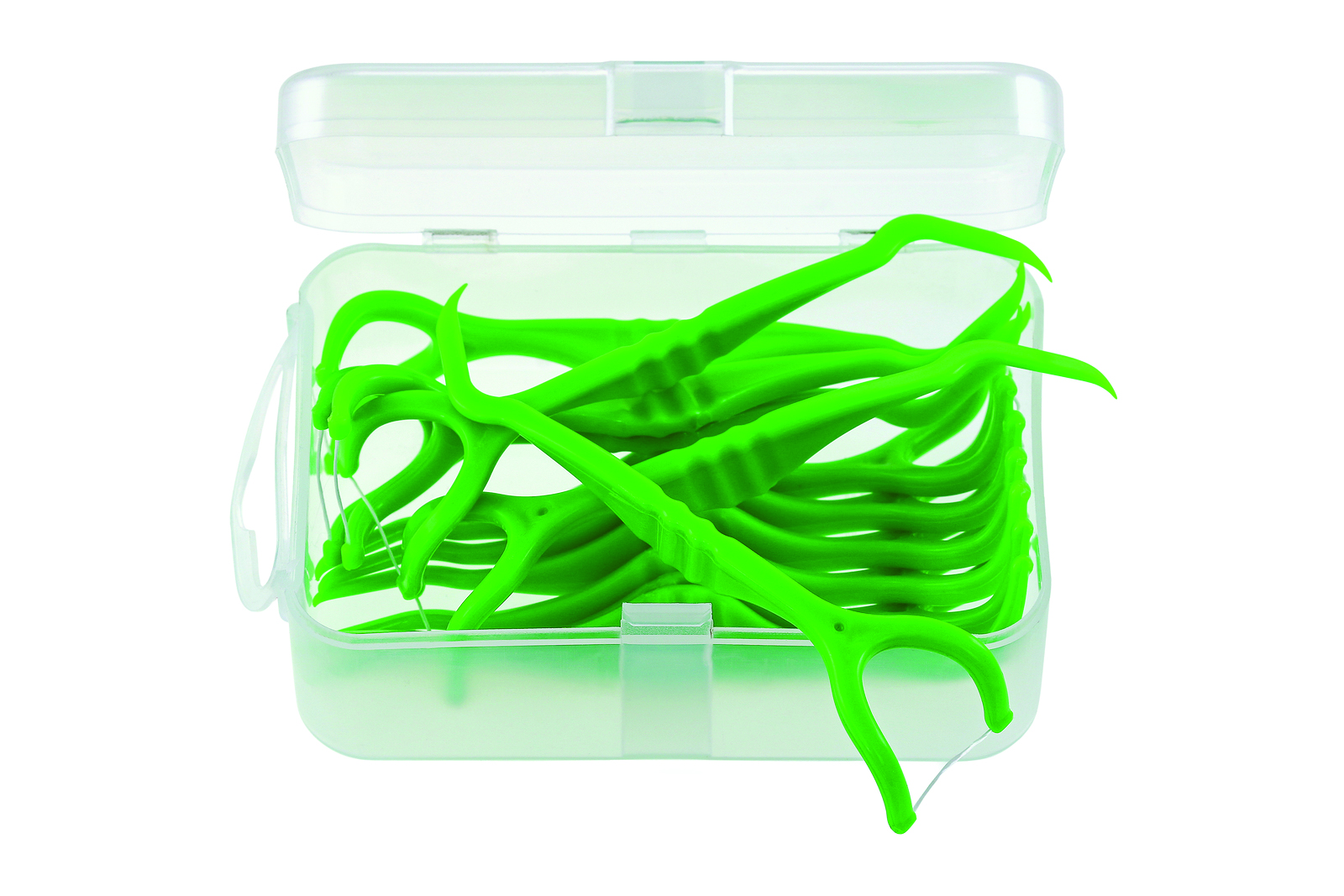Flossing alternatives

Dental flossers such as these are just one alternative to traditional dental floss.
Traditional dental floss isn’t the only way to clean between teeth. Here’s a look at just a few alternatives:
- Water flossers – These appliances use a pressurized stream of water to clear food debris, plaque and bacteria from between teeth and can be especially helpful for those with dexterity issues, orthodontic appliances, dental implants or who find flossing just plain difficult. The downsides: Replacement tips — usually in the ballpark of $9 for a two-pack — have to be replaced every three to six months; plus, you may get a bit wet from the spray until you get the hang of it. Stomatology Center Director Dr. Terry Rees’ take: “Water flossing is messy, and many patients try it for a while then give up and set it aside. I would like to see a study on how many water irrigation devices are still in use after one year of purchase.”
- Miswak (chewing sticks) – People throughout much of the world use chewing sticks as an adjunctive device to promote better dental health, and interestingly enough, research from Texas A&M College of Dentistry’s dean illustrated that chemicals in the chewing sticks used by Nigerian populations amp up their plaque-fighting potential.
“The nature of the sticks is that they are fibrous, so they act more like a toothbrush,” Dean Lawrence Wolinsky explains. “People use these chewing sticks almost like worry beads; they may chew on them for 20 to 30 minutes, so the exposure time of using a mechanical device to help you clean the plaque is good.”
- Flossers – When dexterity is a concern (especially for kiddos and the elderly), this “floss on a handle” is a viable alternative. It eases the process of reaching into the back of the mouth. One downside: its taut shape doesn’t allow for easy access around teeth at the gum line.
- Interdental picks – Tiny, rubbery and soft — and nothing like wooden toothpicks (ouch!) — these devices often have lots of little bristles attached to a handle, allowing users to guide them between teeth with ease for a gentle cleaning.